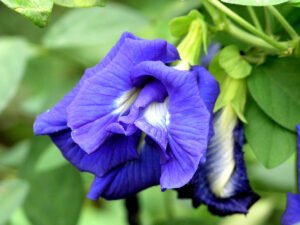
ScientificName: Combretum quadrangulare
Common Name: Combretum or Takeo Bushwillow
Family: COMBRETACEAE
Parts Use: Leaf , flower and Seed
Exploring Combretum quadrangulare: A Traditional Botanical with Emerging Interest
In the vibrant tapestry of Southeast Asian traditional medicine, certain plants stand out for their long-standing use and unique properties. Among these is Combretum quadrangulare, a medium-sized tree found in countries like Thailand, Laos, Cambodia, and Vietnam. Known locally as “Sakae Naa” (สะแกนา) in Thailand, this botanical has been a part of local wellness practices for generations, particularly for its various applications in folk remedies.
The Distinctive Combretum quadrangulare
Combretum quadrangulare is characterized by its distinctive four-angled branches (hence “quadrangulare”), oval leaves, and small, greenish-yellow flowers. The tree produces small, winged fruits. While visually unassuming, it’s the bark, leaves, and sometimes the seeds of this plant that have traditionally been processed and utilized.
A Legacy of Traditional Uses
For centuries, Combretum quadrangulare has been an integral part of traditional health practices in its native regions. Local communities have historically used preparations from different parts of the plant for a variety of purposes, including:
- Digestive Support: Traditionally used to aid digestion and address minor gastrointestinal discomforts.
- Wound Care: Applied topically in some traditional settings for its potential soothing and cleansing properties on skin abrasions or minor wounds.
- General Wellness: Incorporated into traditional tonics aimed at promoting overall vitality and well-being.
- Oral Health: In some areas, it has been used in traditional remedies for oral hygiene.
It’s important to note that these are traditional uses based on local knowledge passed down through generations.
The Science Behind the Tradition: Phytochemicals
Modern scientific inquiry is gradually shedding light on the traditional applications of Combretum quadrangulare. Preliminary phytochemical studies have identified several active compounds within the plant, including:
- Tannins: Known for their astringent properties, which align with traditional uses for digestive and topical applications.
- Flavonoids: A group of compounds celebrated for their antioxidant potential.
- Alkaloids: Various types of alkaloids have been identified, which are often subjects of further research for their potential biological activities.
These compounds are believed to contribute to the plant’s traditional effects, and ongoing research continues to explore their specific mechanisms of action and potential benefits.
Bridging Tradition and Modern Wellness
At [Your Website Name], we believe in the power of nature’s diverse botanical heritage. While Combretum quadrangulare holds a significant place in traditional practices, we emphasize responsible and informed use. Our commitment is to provide meticulously sourced and high-quality natural ingredients, allowing you to explore the rich history and potential benefits of botanicals like Combretum quadrangulare in a modern wellness context.








Reviews
There are no reviews yet.